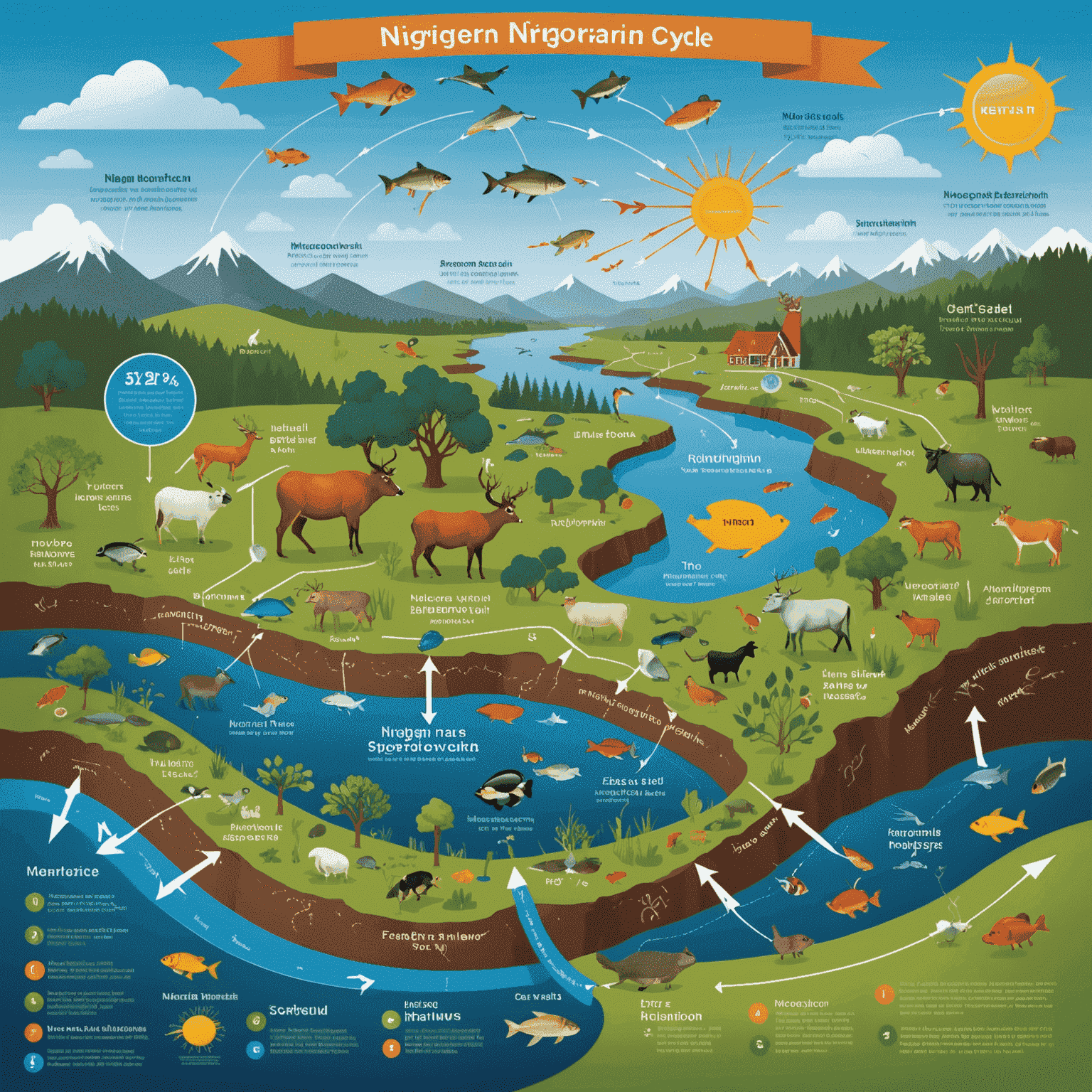Nitrogen in Animal Behavior: Instincts Unveiled

In the intricate dance of nature, nitrogen compounds play a pivotal role in shaping animal instincts and behaviors. From the subtle whispers of pheromones to the potent defenses of toxic secretions, nitrogen's influence on the animal kingdom is both profound and fascinating.
The Language of Pheromones
At the heart of animal communication lies a secret language written in nitrogen-rich molecules. Pheromones, often containing nitrogen-based compounds, serve as chemical messengers that trigger specific behaviors and physiological responses in members of the same species.
Did You Know?
The sex pheromone of the silkworm moth, bombykol, contains a nitrogen-based functional group that is crucial for its potent attractant properties.
These nitrogen-infused signals can convey a wealth of information, including:
- Mating readiness and attraction
- Territorial marking
- Alarm signals
- Trail marking for navigation
- Social recognition within colonies
Defensive Mechanisms: Nature's Chemical Warfare
Nitrogen compounds also play a crucial role in animal defense strategies. Many species have evolved to produce nitrogen-rich toxins as a means of deterring predators or competing with other organisms.

Instancess of nitrogen-based defensive compounds include:
- Alkaloids: Found in poison dart frogs and certain plants, these nitrogen-containing organic compounds can be highly toxic to predators.
- Cyanogenic glycosides: Present in some insects and plants, these compounds release toxic hydrogen cyanide when broken down.
- Tetrodotoxin: A potent neurotoxin found in pufferfish and some amphibians, containing multiple nitrogen atoms in its structure.
Nitrogen and Cognitive Processes
Beyond communication and defense, nitrogen compounds are integral to the very fabric of animal cognition and instinct. Neurotransmitters, the chemical messengers of the brain, are often nitrogen-based molecules that facilitate the transmission of signals between neurons.
Key Neurotransmitters:
- Dopamine: Involved in reward-motivated behavior
- Serotonin: Regulates mood, appetite, and sleep
- Norepinephrine: Plays a role in attention and responding to stress
These nitrogen-rich compounds influence a wide array of instinctual behaviors, including:
- Fight-or-flight responses
- Mating rituals
- Parental care
- Foraging patterns
- Migratory instincts
The Ecological Web: Nitrogen's Far-Reaching Impact
As we unravel the complexities of animal behavior, it becomes clear that nitrogen's role extends far beyond individual organisms. The nitrogen cycle, a cornerstone of ecosystem function, indirectly shapes animal instincts by influencing food availability, habitat quality, and environmental cues.

By understanding the intricate relationships between nitrogen compounds and animal instincts, we gain deeper insights into:
- Evolutionary adaptations
- Ecosystem dynamics
- The delicate balance of nature
- Potential applications in fields such as pest control and wildlife conservation
Conclusion: A World of Chemical Whispers
As we continue to explore the hidden world of nitrogen in animal behavior, we uncover a landscape rich with chemical conversations and instinctual responses. From the microscopic dance of pheromones to the grand migrations guided by environmental cues, nitrogen compounds shape the very essence of animal instincts.
This fascinating interplay between chemistry and biology reminds us of the intricate connections that bind all living things in the great web of life. By studying these nitrogen-driven instincts, we not only deepen our understanding of the natural world but also gain valuable insights that may help us address pressing ecological challenges and foster a more harmonious relationship with our environment.